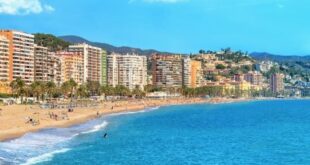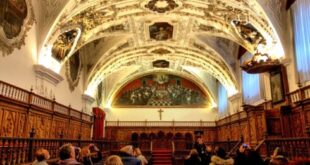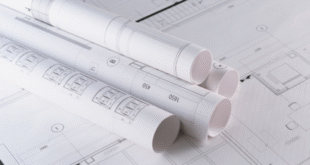WHEN someone once asked Prime Minister Clement Attlee to define socialism, he replied that he couldn’t – but he knew it when he saw it.
Art Deco is similar. It’s hard to define, but easy to love.
Elon Musk has tried to reinvent Deco for the 21st Century, but it’s been making waves for more than 100 years.
What exactly is it?
It’s a style, a spirit, a vibe – something that says how things should look.
Art Deco believes that every piece of art we create, no matter if it is a skyscraper case or a cigarette pack, can be and should look beautiful.
We seem to want more elegance the more troubled our times get.
Emerging in the aftermath of World War One, the ‘arts decoratifs’ movement – from which Art Deco takes its name – was born during one of the bleakest decades in modern history.
Think of Fred Astaire, Ginger Rogers and the Great Depression. Nobody wanted to see films about hardship. They wanted ocean liners with big bands and tuxedos.
Deco was a time of bold lines, big ideas, and beauty. It’s sleek. It’s modern. It’s escapism.
Today, Elon Musk calls his ‘robovan’ a new Deco icon. But in the early twentieth century, it was Spain which gave the movement its first flair.
Despite staying neutral in both World Wars, Spain suffered its own traumas – economic collapse, political assassinations, and a brutal civil war.
As the old ways collapsed – monarchy, Church, and rural life – cities like Madrid, Barcelona and Valencia boomed, and with them came a burst of architectural creativity.
Even in chaos elegance found its home.
Spain became a canvas for modern materials and ambitious visions – a land where Deco’s bold lines could shine in the sunlight.
Spanish architects built a future that they could be proud of, with everything from concrete to chrome to decorative staircases and sweeping facades.
Here is the list. Olive PressEach of the 12 top Art Deco buildings tells a unique story about ambition, innovation and style.
1. Casa Judia, Valencia (1930)


Calle Castellon has a striking display of colour, geometry and pattern. Known as the ‘Jewish House’, this private residence is a candy box of intricate detail, with star-shaped windows and bright mosaics. It’s one Valencia’s best-known examples of Spanish Art Deco, designed by Juan Francisco Guardiola Martinez.
2. Edificio Sagasta, Malaga (1903)


Sagasta, a graceful corner building featuring rounded balconies with ornate ironwork and a blend of early Deco with Modernist touches, is an outstanding example of how early Deco can be combined with Modernist elements. It was built by Jeronimo cuervo and set the stage for Malaga’s architectural leap to the 20th century. It is still a landmark to this day, especially when it’s bathed in golden Costa del Sol lights.
3. Colisseu Balear, Palma de Mallorca (1928)


Its beautiful arches, and repeating patterns make this bullring a Deco contender. Built just a few years before the Spanish Civil War, it fuses tradition with modernity – showing that even in sport, Spain wasn’t afraid to flirt with futuristic design.
4. Hospital de Maudes, Madrid (1916)


This luminous, white building was originally a hospital for charity. It combines functionality with Gothic and Deco styles. Designed by Antonio Palacios – a Deco pioneer – it stands as one of Madrid’s most imaginative and humanist structures. The interior courtyards are as beautiful as its exteriors. Today, the building is a cultural center.
5. Palau Guell, Barcelona (1888)


Gaudi before Gaudi got weird. The early work is more symmetrical and has cleaner lines than later works. Iron grilles, curving stone forms and iron grilles all hint at the Deco style.


It’s a masterpiece of restrained luxury, with a Catalan flair.
6. Casa Fuster, Barcelona (1908)


Casa Fuster has been transformed into a five star hotel and is now one of Passeig de Gracia’s crown jewels. It was designed by Lluis Domenech i Montaner and combines Art Nouveau with Art Deco.


The building’s marble, glass and curvaceous window frames make it both a relic as well as a revelation.
7. Edificio Espana, Madrid (1948)


The late-Deco giant, which was once the tallest skyscraper in Spain, makes an imposing vertical statement on Plaza de Espana. With its wedding-cake tiers and American-style ambition, it captures a nation emerging from civil war, looking up – quite literally – to a brighter future.
8. Fundacio La Caixa, Palma de Mallorca (1903)


This former Gran Hotel building is a riot in ornamentation and innovation. It was designed by Modernist architect Lluis Domenech i Montener and reflects the early Deco confidence of its ceramic tiles, sweeping stairs, and expressive carvings.


Today it hosts cultural events and exhibitions – a Deco temple with brains and beauty.
9. Casa Matesanz, Madrid (1923)


Casa Matesanz, a stunning example of urban Deco on Gran Via is an outstanding building. The clean vertical lines and wide windows make this a striking building in Madrid’s famed street. It was designed by Antonio Palacios, (again) and is another example of his vision of a new, stylish Spain.
10. No. 4, Avenida Rosaleda, Malaga (1932)


This residential jewel is a gem with its curved balcony, geometric railings, and playful use space. The apartment building is hidden but it rewards curious eyes. It shows that Deco wasn’t just for the elites – it was also for everyday elegance in the sunniest parts of Spain.
11. Teatro Rialto, Valencia (1939)


This charming theatre on Plaza del Ayuntamiento, designed by Cayetano Di Carminati, was converted into a theater by the Valencian Government in the 1980s.
12. Edificio Hardisson, Santa Cruz de Tenerife (1937)


This four-storey residential block was designed in 1937 by Enrique Rumeu de Armas. The trapezoidal layout and symmetrical distributions of openings were both highly original, and are a good example of Rumeu’s classicalist rationalist style.
READ MORE
 Costa News Spain Breaking News | English News in Spain.
Costa News Spain Breaking News | English News in Spain.





